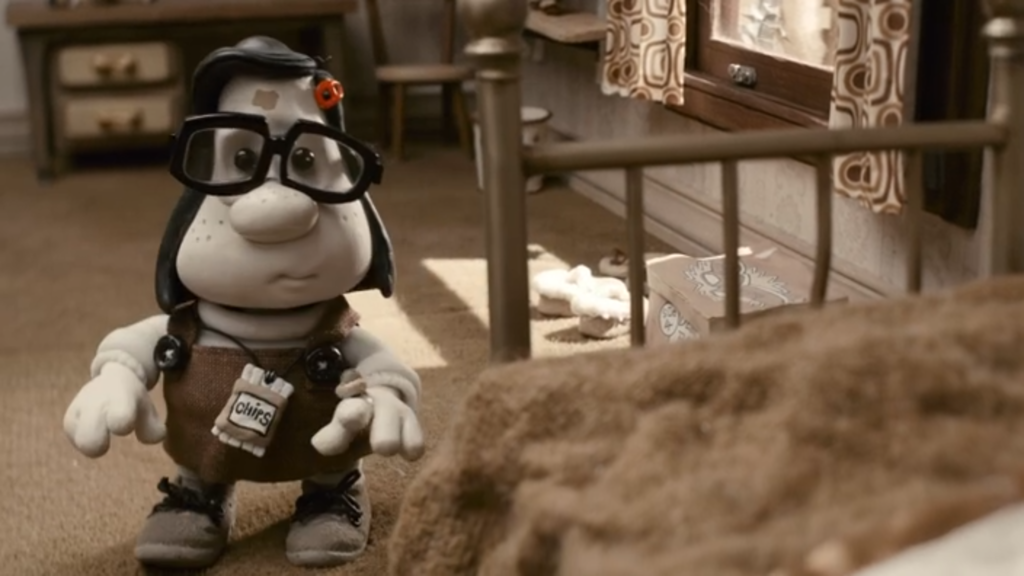
Film Matters: Please tell us about your article that is being published in Film Matters.
Taylor Floyd: My article explores the core aspects of how the unique elements of clay molding impact the genre of claymation. This exploration was conducted using three of Australian filmmaker Adam Elliot’s films, with the focus primarily being on the elements of mise-en-scene in each film.
FM: What research and/or methodologies do you incorporate in your article?
TF: My research method began with extensive amounts of reading; any textbook or paper I could find on filmmaking and claymation was read. Once I had a solid foundation of knowledge, I began watching claymation films from diverse periods and by many different directors.
FM: Describe the original context for/when writing this article while an undergraduate student.
TF: When initially writing this article, I was conducting basic film research for my Intro to Film class while learning the fundamentals of filmmaking. This research then branched out to more specific film genres, which is when I became focused on animated films and eventually claymation.
FM: How have your personal experiences shaped and influenced your writing?
TF: If it were not for my personal love of film and the genre of claymation, the writing process of my paper would not have been possible. Films that developed my passion for filmmaking include the works of Nick Park and Henry Selick. However, the film that is at the core of my love would be Coraline (Selick, 2009); the complex world created using moldable clay will forever stand out to me.
FM: What aspects of the writing process were most challenging? Why?
TF: Truly the most challenging aspect of the writing process was identifying a successful method of demonstrating my findings to a broader audience. While I wanted to ensure that all my research was conveyed in the final article, making sure my research was understandable to a diverse audience was vital to me. Claymation is a genre of film that many readers may be unfamiliar with, and allowing them to grow their knowledge of the genre through my article was my main goal.
FM: What do you enjoy most about your article?
TF: The element of my article that I enjoy the most would be the discussion of the symbolistic nature of color in the films. Throughout my research process, color stood out to me as one of the most beautiful aspects of Elliot’s filmmaking. It allowed for connections to be made throughout each of Elliot’s films and the whole genre of claymation.
FM: How has the Film Matters editorial and publication process impacted the development/evolution of your article?
TF: The editorial and publication process with Film Matters has allowed me to develop my article and findings into the ideal versions of themselves. I was able to build upon my findings and develop methods of writing that demonstrated these findings to their full extent.
FM: What audience do you hope to reach with your Film Matters article and/or what impact do you hope it has on the field of film studies?
TF: The audience that I hope to reach with my article would be other film scholars who possibly have little knowledge of claymation. I would like to spread my passion for claymation filmmaking and encourage others to develop a passion for it. My primary goal is to start a conversation about claymation so that others can learn and grow a curiosity for the art behind these films.
FM: How has your department and/or institution supported your work in film and media?
TF: My institution completely supported my work and exploration in film; if it were not for the opportunities they created, I would not have been able to complete my article.
FM: How has your faculty mentor fostered your advancement as a film scholar?
TF: My faculty mentor not only assisted in fostering my passion for writing and film but encouraged me throughout my entire writing process. Their passion for film was contagious and allowed me to remain motivated, especially at the beginning of my research. They were my biggest supporter and made the writing process truly enjoyable.
FM: What advice do you have for undergraduate film and media scholars?
TF: Advice that I would give undergraduate film and media scholars would be to find your passion and follow it. Even if others do not share your passion, do not be scared to be the first one to do something. Attempting to do something that has never been done can be daunting, but it can be the most rewarding.
FM: What are your future plans?
TF: My future primarily includes continuing to write and build my knowledge on film, exploring other subgenres of animation. I plan to continue my education, expanding my writing skills, and potentially creating a claymation short film.
Author Biography
Taylor Floyd currently takes classes at Broward College, considering working toward a degree in film studies. While she primarily writes about animated films, she spends much of her free time watching slasher films.







































